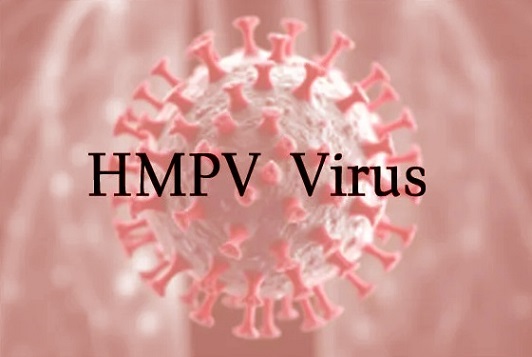Israeli Scientist Develop Oral Formulation Involving Ionophoric Polyphenols with Zinc Ions to Combat Respiratory Viruses Including HMPV
Nikhil Prasad Fact checked by:Thailand Medical News Team Jan 06, 2025 3 months, 1 week, 43 minutes ago
Medical News: A team of researchers from Tel Aviv University, Israel, has made significant strides in the fight against respiratory viruses. Led by Dr. Topaz Kreiser and Dr. Dor Zaguri from the Shmunis School of Biomedicine and Cancer Research, this groundbreaking study explores the development of a novel oral formulation combining ionophoric polyphenols with zinc ions. This innovative composition offers a promising therapeutic approach against a spectrum of respiratory RNA viruses, including the Human Metapneumovirus (HMPV), Influenza A, and coronaviruses such as HCoV-OC43.
 Israeli Scientist Develop Oral Formulation Involving Ionophoric Polyphenols with Zinc Ions to
Israeli Scientist Develop Oral Formulation Involving Ionophoric Polyphenols with Zinc Ions to
Combat Respiratory Viruses Including HMPV
The Science Behind the Formula
Respiratory RNA viruses have long posed a global health challenge, as seen during the COVID-19 pandemic. Zinc’s antiviral properties, particularly its ability to inhibit viral RNA replication, have been well-documented. However, achieving effective intracellular zinc concentrations has remained elusive. Here is where ionophoric polyphenols - bioactive plant compounds or phytochemicals - step in. These polyphenols act as carriers, efficiently transporting zinc ions across cell membranes.
The research team, which includes contributions from the Blavatnik Center for Drug Discovery and the Sagol Interdisciplinary School of Neuroscience, tested a combination of zinc picolinate with flavonoids such as Epigallocatechin-3-gallate (EGCG), quercetin, taxifolin, and naringenin. Copper sulfate was also added to maintain ionic balance. This
Medical News report delves deeper into their methodology and findings.
Key Findings of the Study
The scientists performed in vitro experiments on human lung carcinoma cells (A549), human non-small cell lung carcinoma cells (H1299), and Vero cells derived from monkey kidney tissues. Their observations revealed the following:
-Enhanced Intracellular Zinc Levels: Treated cells exhibited a threefold increase in intracellular zinc concentrations compared to untreated controls. This finding supports the hypothesis that polyphenols enhance zinc’s bioavailability within cells, potentially inhibiting viral replication.
-Broad-Spectrum Antiviral Activity: The formulation showed remarkable efficacy in reducing viral RNA replication across various RNA viruses. Quantitative PCR analyses revealed a 50-95% decrease in genome replication levels for pathogens such as HMPV, Influenza A (H1N1 strain), and HCoV-OC43.
-Non-Toxicity of Components: Cytotoxicity tests confirmed that the formulation is non-toxic to cultured cells at therapeutic concentrations. This safety profile underscores the potential for real-world applications as a dietary supplement or therapeutic adjunct.
Experimental Details
The researchers utilized
fluorescence microscopy and fluorescence-activated cell sorting (FACS) to assess viral inhibition. Cells pre-treated with the zinc-polyphenol combination demonstrated significantly reduced fluorescent markers indicative of viral presence. For instance:
-HMPV in Vero Cells: Fluorescent signals were diminished by up to 90%.
-Influenza A in A549 Cells: Viral replication markers dropped by 80%.
The team’s innovative approach also extended to mechanistic insights. They discovered that elevated intracellular zinc levels disrupt viral RNA-dependent RNA polymerases - enzymes critical for the replication of RNA viruses.
Implications for Public Health
The oral formulation presents a game-changing opportunity in combating not only COVID-19 but a broader array of respiratory viruses. Unlike existing antiviral drugs, which often target specific viral proteins, this zinc-polyphenol composition operates through a more generalized mechanism, potentially mitigating the risk of resistance from viral mutations.
Furthermore, the naturally sourced ingredients (commonly found in fruits and vegetables) make the formulation accessible and sustainable. This low-cost approach could be a crucial tool in underserved regions with limited access to advanced antiviral therapies.
Future Prospects and Clinical Translation
While the current study focused on in vitro experiments, the findings pave the way for clinical trials. The researchers emphasize the need for rigorous in vivo studies to confirm efficacy and safety in human populations. The formulation’s versatility suggests it could serve both prophylactic and therapeutic roles, especially during seasonal outbreaks of respiratory illnesses.
Conclusion
This study is a testament to the ingenuity of researchers at Tel Aviv University, showcasing how fundamental scientific insights can lead to tangible health innovations. The combination of zinc ions and ionophoric polyphenols demonstrates a potent, safe, and scalable strategy to combat a wide range of respiratory RNA viruses. By harnessing the synergistic properties of these natural compounds, the formulation holds the potential to alleviate the global burden of respiratory diseases.
The study findings were published in the peer-reviewed journal: Pharmaceuticals.
https://www.mdpi.com/1424-8247/15/3/377
For the latest HMPV News, keep on logging to Thailand
Medical News.
Read Also:
https://www.thailandmedical.news/news/chlorpromazine-found-to-inhibit-human-metapneumovirus-hmpv-by-blocking-virus-internalization
https://www.thailandmedical.news/news/russian-antiviral-drug-ingavirin-found-effective-against-human-metapneumovirus-insights-from-a-2012-study
https://www.thailandmedical.news/articles/hmpv-human-metapneumovirus
